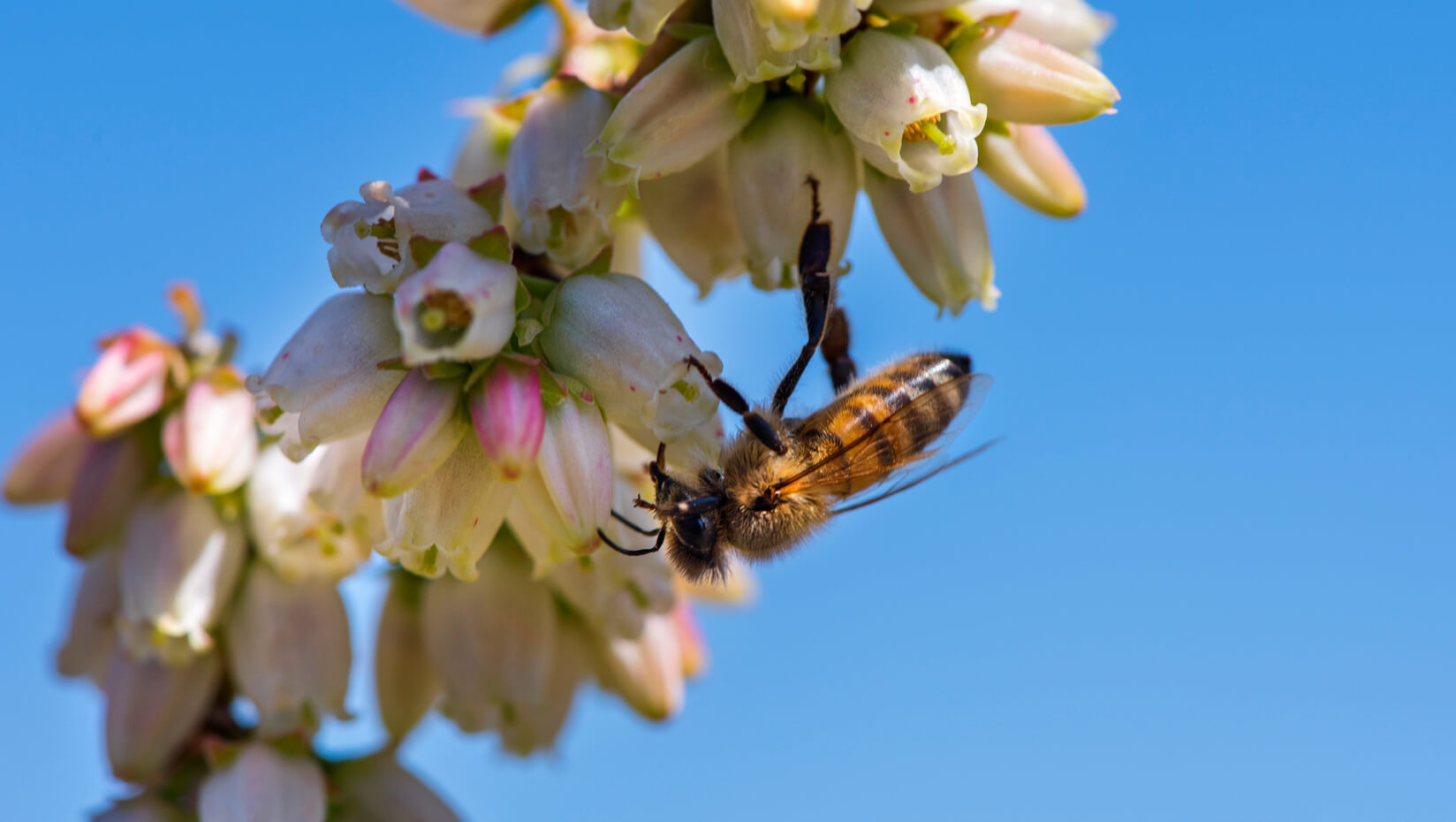
UMaine researchers to unveil wild bee habitat assessment tool July 19
University of Maine researchers have developed a tool called “BeeMapper” that will allow blueberry growers to assess the predicted wild bee abundance in the landscape surrounding their crop fields. They will debut and demonstrate the computer-based tool on Wednesday, July 19 at the UMaine Cooperative Extension annual Wild Blueberry Summer Field Day at Blueberry Hill Farm in Jonesboro.
“Having a better understanding of the predicted wild bee abundance in the landscape surrounding crop fields is important when making pollination management decisions,” says UMaine doctoral candidate Brianne Du Clos, who led the development of BeeMapper with funding from the university’s Senator George J. Mitchell Center for Sustainable Solutions.
For example, knowing the numbers and types of wild bees in the surrounding landscape will help growers budget how many honeybee hives to rent and help determine if they could take more action to enhance wild pollinator populations on their fields.
BeeMapper is part of a pollinator toolbox developed at UMaine that includes wild bee identification and monitoring tools, guidelines on installing pollinator plantings, and a budgetary tool to explore financial feasibility of pollination management decisions. Together, these tools will help growers attract more wild bees to their farms.
“Wild bees are a lot more efficient at pollinating wild blueberries compared to the honeybees growers rent,” says Du Clos. “In particular, bumblebees do a much better job at pollinating the blueberry flower than honeybees do.”
Evidence is mounting that pollinators, particularly honeybees, are declining in the U.S. and globally, decreasing by more than 40 percent since 1980. The loss is not only an environmental problem; it also has economic ramifications for farmers who grow animal-pollinated crops. Maine, which has the biggest wild blueberry economy on Earth — producing over one third of the world’s wild blueberries — is particularly dependent on pollinators for its blueberry crop.
Maine growers bring in up to 80,000 honeybee hives annually to pollinate the blueberry crop. But commercial hive availability and cost are likely to change. Maine has close to 300 native bee species, none of which live neatly in 40,000 insect colonies like the honeybee. But they can be attracted en masse by special pastures and certain plants.
BeeMapper developers used eight land cover types that they determined are relevant to Maine’s bee populations and then used an ecosystem model to make predictions on wild bee abundance at each point across the landscape.
“The tool will give growers better information on what the wild bee habitat is and where the bees that are pollinating their crop are coming from,” says Du Clos.
Information from BeeMapper can be used to determine placement of honeybee hives during blueberry pollination, establish a pollinator conservation plan for particular crop fields, and help understand wild bee communities in different types of land cover. Du Clos notes that grower input and support was a crucial part of the development process; two prototypes of the tool were tested with growers and their feedback was incorporated into the final version.
For more information, contact David Sims, communications and outreach coordinator, Senator George J. Mitchell Center for Sustainability Solutions, 207.581.3244; david.sims@umit.maine.edu.
Contact: David Sims, 207.581.3244; david.sims@umit.maine.edu
